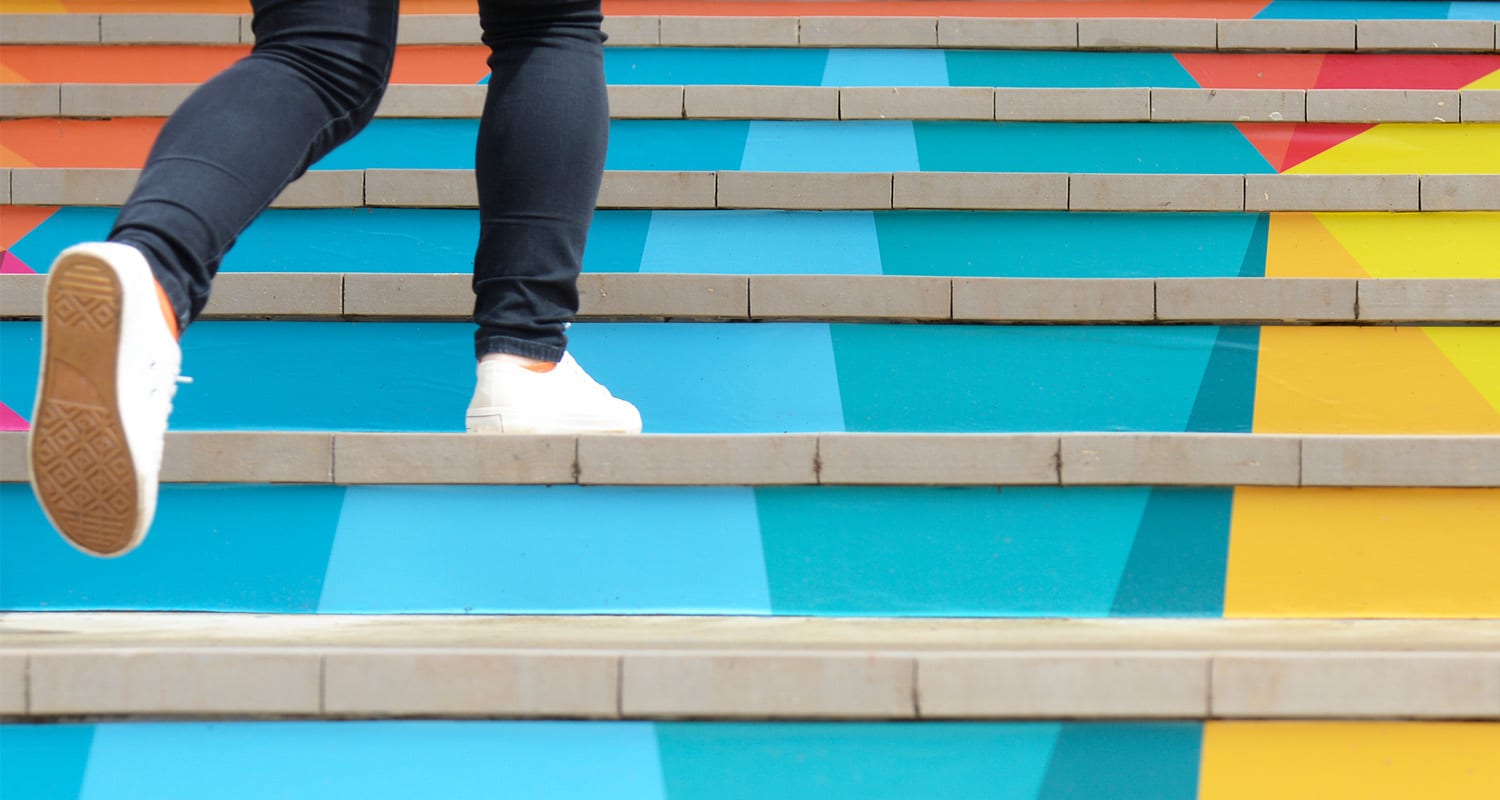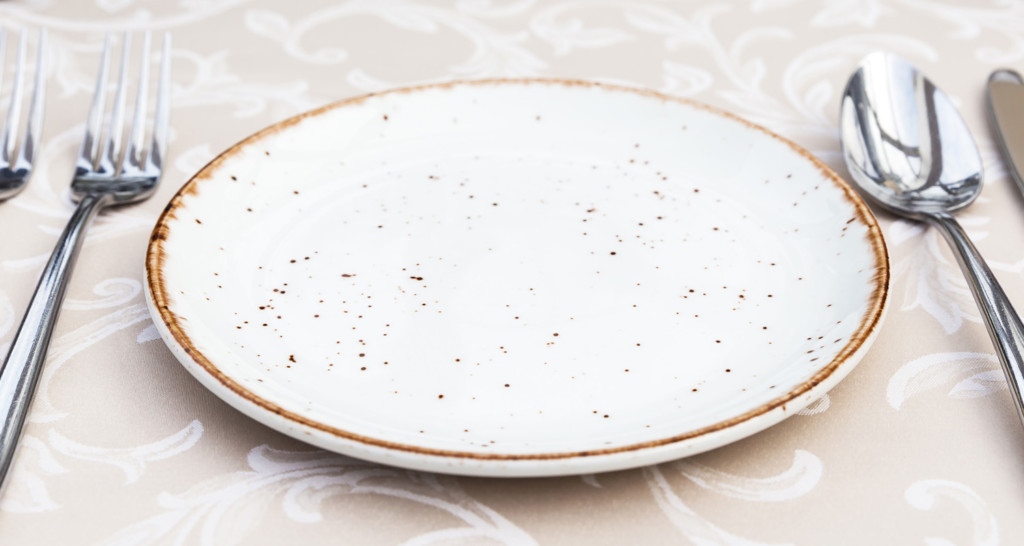
[tldr]
- One of the most powerful hacks for happiness could be giving up some of the comforts in your life. Forgoing little luxuries every day rewires the mitochondria in your brain.
- Giving up small comforts also fosters gratitude for the little things in your life that you probably don’t even notice.
- Here are some exercises to help you build resilience and make you tougher. These include taking a cold shower, getting rejected on purpose, and fasting.
- If you felt particularly good after one, consider adding it to your daily routine.
[/tldr]
We live in one of the plushest times in human history. You have ready access to more material comforts than you could possibly use. There’s unlimited food, entertainment, distraction, and stimulation, and you can get all of it without leaving your memory foam bed.
And yet, somehow, people are more unhappy than ever before. The percentage of Americans on antidepressants has doubled in the last 15 years, and 40 percent say they are more depressed than previous years.
One of the most powerful hacks for happiness, ironically, could be giving up some of the comforts in your life.
Why resilience makes you tougher (and happier)
I write about building resilience in my book “Game Changers: What Leaders, Innovators, and Mavericks Do to Win at Life.” Forgoing little luxuries every day rewires the mitochondria in your brain. Your mitochondria are responsible for telling you when they think your body is about to die – they are the early threat detectors, but they’re dumb. So when they spot a threat that isn’t really a threat, whether it’s a cold shower or social rejection, or any discomfort or fear, they convince you not to do it. You buy into its lies.
When you have enough energy to summon your willpower, you do it anyway. And eventually, when you keep doing it, the threat detector mitochondria reset their alarms. The cold shower that felt like it would kill you 3 days ago is now no big deal. Killing it on stage in front of 10,000 people is no longer a life-or-death, knuckle-clenching experience.
Giving up small comforts also fosters gratitude for the little things in your life that you probably don’t even notice. That cold shower in the morning will make you grateful for the luxury of hot water in a way you’ve never been before. You become thankful for what you have, instead of unhappy because of what you don’t have.
So this week, here are some exercises to help you build resilience, or toughness, by showing your body – and your mitochondria – what you’re really made of. See if you can make it all the way through.
Related: Hormesis: How to Use Stress to Boost Your Resilience
1. Take a cold shower
Skip the hot water when you shower this morning. Go as cold as you can for at least a couple minutes.
Cold water hits that sweet spot of uncomfortable but bearable. You’ll have to overcome the little mental hurdle of “it’s morning and I haven’t had my Bulletproof Coffee and I don’t want to do this,” but as soon as the water actually hits you and you stand for a second, you’ll realize it’s not as bad as your mind was making it out to be.
Cold exposure has major biological benefits, too. It increases your metabolism, elevates feel-good neurotransmitters, makes your mitochondria more efficient, promotes collagen synthesis, and upgrades your body in about a half-dozen other cool ways.
Learn more here about the benefits of extreme temperatures
Quick mental tip: If you’re standing under icy water thinking about how much you want to get out, you won’t make it. Instead, focus on the sensation of cold, or of the water hitting your skin. Stand tall instead of shying away. This is where resilience comes in: accept that you’re uncomfortable, and recognize that it’s going to be okay. It forces you out of your protesting mind and into the present moment. In this way, a cold shower becomes meditative as well as good for your biology.
Stick it out for 2-3 minutes. Congratulations! You’ve completed day one of the resilience challenge.
2. Do a digital detox
The average person consumes 174 newspapers’ worth of information every day.[ref url=”https://rss.onlinelibrary.wiley.com/doi/full/10.1111/j.1740-9713.2012.00584.x”] Distraction is always at your fingertips. Feeling lonely? Pull up Facebook. Bored? Read the news. Awkward silence in an elevator? Check Instagram.
Social media is designed to be as stimulating as possible, and when your brain gets used to that level of instant gratification, something like a beautiful sunset or a quiet moment becomes meaningless. No surprise that using social media has strong ties to depression and anxiety. Real life can’t compete with the endless, artificially intense stimulation of technology. Ditching that quick hit of dopamine lets you get back in touch with the simple pleasures of life, which builds happiness and gratitude.
Don’t fill the little moments of your day with social media, news, TV, video games, or politics. Delete all your social media and news apps from your phone for the next 24 hours. You can always download them again. You can also use a free website blocker like SelfControl to keep you off Facebook and news sites while you’re at your computer. Pay attention to when you reach for a distraction, and notice how you feel when you don’t get it. It might be more uncomfortable than you expect. Embrace that discomfort for today.
3. Get rejected on purpose
Try out rejection therapy — when you ask for things you think you won’t get, expecting to hear “no.” I write more about this technique in “Game Changers.” You’ll quickly learn that being rejected isn’t such a big deal. You’ll survive the “no’s,” and you’ll only get tougher the more you hear them. So actively seek out rejection today. Here are some examples of ways to get rejected: Strike up a conversation with a stranger, or ask for a discount the next time you buy something. The results may surprise you, and you’ll likely be rejected less frequently than expected. You’ll realize that people want to help others when given the chance. Humans are awesome.
Related: Why You Should Get Out of Your Comfort Zone (And 10 Things You Can Do Right Now)
4. Meditate
A major part of resilience is accepting life as it comes. You can’t choose how things will play out, but you can choose how you respond to them. Meditation helps.
Imagine an ocean. The waves on the surface are the ups and downs of daily life. Meditation lets you dive below the surface. The waves are still there, but they don’t affect you anymore. You’re operating from a place that’s always still.
Life will always have ups and downs. Some will be small, like getting cut off in traffic or being being late to a meeting, and some will be large, like the death of a family member or the loss of a job. Meditation cultivates an inner stillness that lets you stay strong through the bad, and enjoy the good as it comes. Meditation also builds gratitude, happiness, relaxation, humility, mental clarity, and empathy. It puts you in a place where you’re appreciating the positive parts of your life, big and small, so much that you see the challenges far less.
You may be thinking, “I’m not good at meditation. I try to clear my mind but I can’t.” That’s fine. Sit still, close your eyes, and let thoughts come as they will. Simply notice them when they come up. If you start to get frustrated, step back and notice your frustration. Whatever happens, accept it and watch it. You’ll find you get caught up in it less and less.
Here’s a complete guide to meditation, along with a more scientific breakdown of its benefits. Meditate for 20 minutes today.
5. Fast
Go without food today. Stick to black coffee, tea, and water with sea salt in it. We’re used to constant access to food, which makes us take it for granted. Skip it for a day, and a simple breakfast will make you happier than you thought possible. Break your fast tomorrow morning with a delicious Bulletproof breakfast. Steak, eggs, bacon, avocado, coffee — whatever you choose, it’ll seem like the best thing you’ve ever eaten.
Plus, fasting stimulates fat burning, boosts human growth hormone to help you put on muscle, gently stresses your mitochondria so they become more efficient, and replaces old or damaged cells with new ones.[ref url=”https://www.ncbi.nlm.nih.gov/pubmed/17374948″][ref url=”https://www.ncbi.nlm.nih.gov/pubmed/26374764″][ref url=”https://www.ncbi.nlm.nih.gov/pubmed/22386777″]
For the resilience benefits, you want to be hungry today. To get the biological upgrades of fasting without the hunger, though, consider adding Bulletproof intermittent Fasting to your daily routine.
6. Walk everywhere
Or bike, if walking isn’t feasible. Extended, low-intensity movement circulates lymph, bringing nutrients to your cells and removing metabolic waste. It also loosens up your muscles, curbs inflammation, strengthens your joints, and decreases stress. Your body is built to move.
Plus, walking or biking will make you appreciate your car (or even public transportation) on a whole new level. When you’ve been walking everywhere, you won’t get frustrated when you’re caught at a red light – you’ll be thankful you’re in a car.
7. Practice gratitude
Sit down before bed tonight and write out three things you’re grateful for. It’s easy to get caught up in looking ahead, striving for the next thing. Take a moment tonight to appreciate what you have. Gratitude builds mental resilience – when you’re in a positive mindset, stressors and challenges become far easier to handle.
One study found a daily gratitude journal made participants 15 percent more optimistic and improved their sleep quality by 25 percent.[ref url=”https://www.ncbi.nlm.nih.gov/pubmed/12585811″] It also made them 10 percent happier, which is the same boost to happiness you’d get from doubling your income.[ref url=”https://www.ncbi.nlm.nih.gov/pubmed/23231724″] Doubling your income takes a lot of time and effort. Gratitude takes 5 minutes each night.
Appreciate the good in your day. Maybe it’s something big, like a promotion at work, or maybe it’s as simple as taking a hot shower this morning, instead of freezing like you did on Monday. Whatever it is, there’s always something to be grateful for. If journaling isn’t your style, here are 10 other ways to practice gratitude.
8. Be mindful
Pay full attention to whatever you’re doing in the moment today. Stay with the present moment. When you’re making coffee this morning, notice every detail – the smell of the coffee beans, the sound as you grind them, the way the steam dissipates into the air. If you’re walking up the stairs, notice every step, how you breathe, the feel of your shoes hitting the floor, and so on. Instead of running on autopilot or trying to multitask, be entirely committed to what you’re doing, right now.
This may sound a little out there, but it’s actually a powerful mental biohack. When you focus on the present, stress and doubt don’t have room to creep in. You’re deeply in touch with the world around you, and you enter a flow state where you’re acting, not thinking. You become effortlessly better at everything you do.
If you catch yourself losing your mindfulness, focus in on something around you. It can be your breathing, the way the light hits the window next to you, the breeze outside, the sound of your keyboard as you type — anything. Noticing details will bring you back to mindfulness. This is a simple and powerful hack to shift your mental state. See how much of today you can spend in the present moment, and see how it changes your performance.
This challenge helps you cultivate resilience in the face of life’s challenges and gratitude for the world around you. Each of these biohacks will help you build a stronger body and mind. If you felt particularly good after doing one, consider adding it to your daily routine.
Sign up for our newsletter below for more biohacking tricks and tips to make you stronger and happier.


















